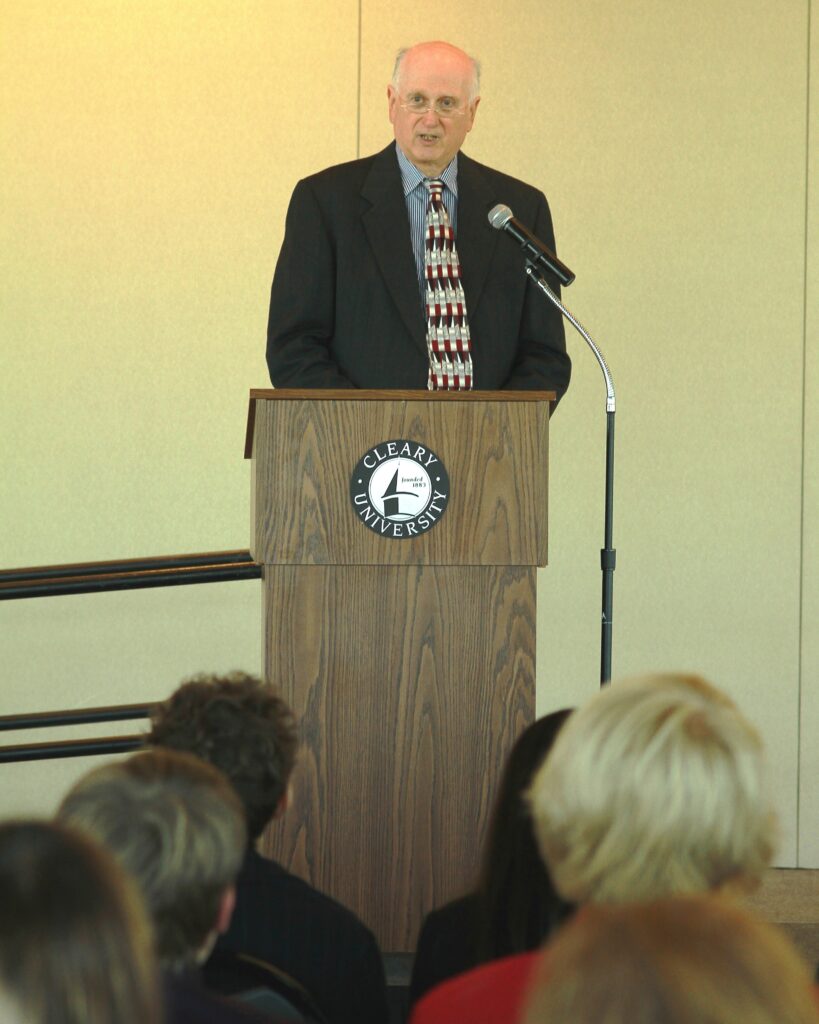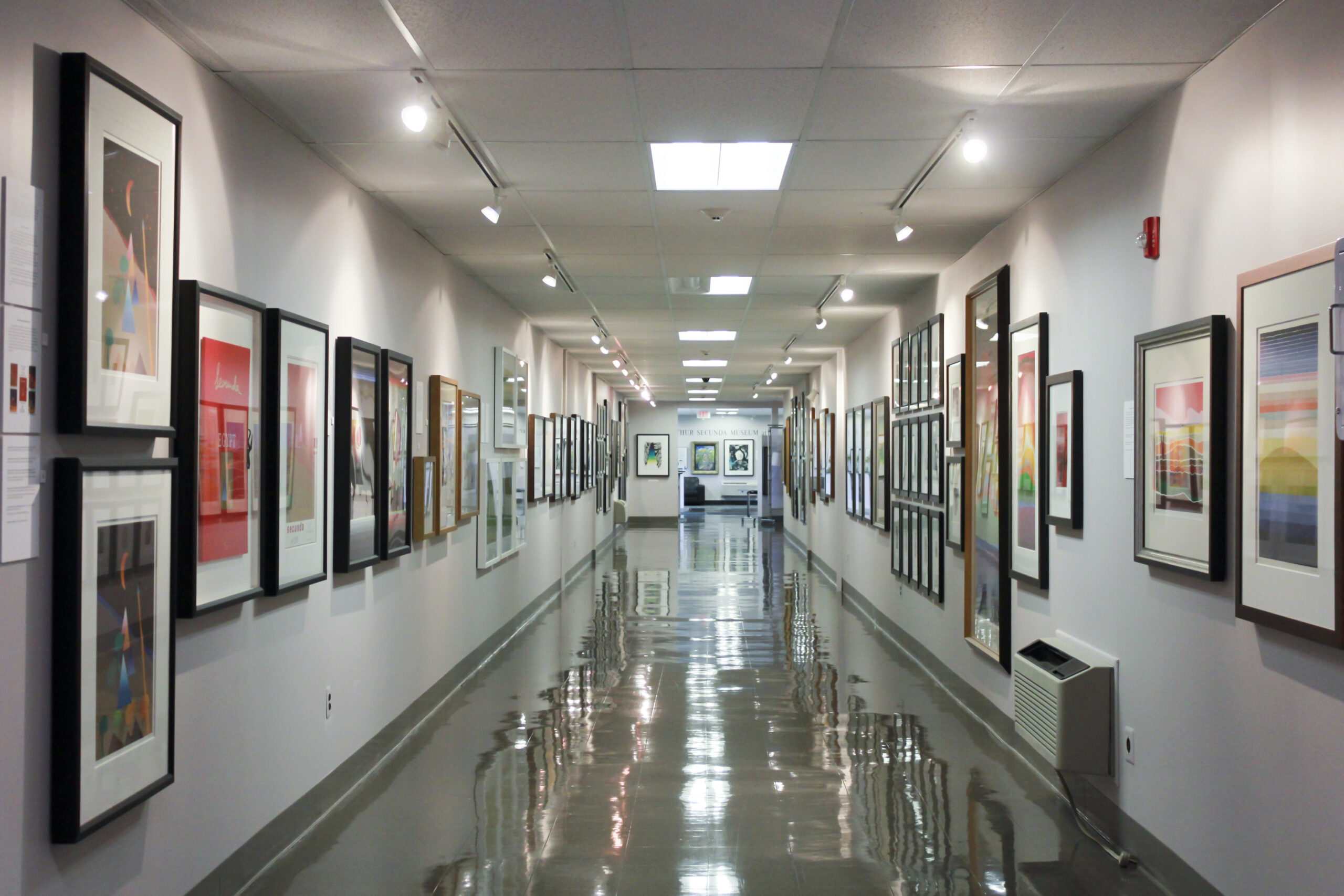At Cleary University, we believe the Arthur Secunda Museum is more than a gallery—it’s a living curriculum that fuels creativity, innovation, and leadership. To better understand why this mission matters—not just to Cleary, but to the world—we sat down with Ed Wall, the founding donor behind the Secunda Museum. His perspective is deeply moving and timely. As Ed puts it, “This isn’t just a museum. It’s a curriculum of imagination. You’re not just preserving artwork—you’re investing in a philosophy of innovation.”
Ed’s unwavering belief in the power of creative thinking—especially within a business education—is the heartbeat of the Secunda Museum. In this interview, he shares how a single piece of art can train students to see beyond the obvious, perceive complexity, and think differently—skills every great leader must master. Read on to hear Ed’s powerful reflections and discover how your support can help preserve this cultural treasure and transform the way our students see the world.
Tom Egan: Ed, when you first thought of creating the Arthur Secunda Museum, what was truly
inspiring you?
 Ed Wall: It was about preserving a legacy – Arthur’s legacy, but more importantly, a legacy of creative thinking. True learning happens when you challenge people to see beyond the obvious.
Ed Wall: It was about preserving a legacy – Arthur’s legacy, but more importantly, a legacy of creative thinking. True learning happens when you challenge people to see beyond the obvious.
Tom Egan: How does an art museum do that in a professional or business-focused university?
Ed Wall: Take the “Moon Man” piece, for instance. Most people would look at it and see just abstract shapes – black and white smears, seemingly chaotic. But if you look closely, you’ll see Arthur’s entire existential journey. There’s a subtle profile of his face, shoulders emerging from what looks like lunar craters. It’s a metaphor for business leadership: what appears random often has profound structure if you’re willing to look deeper.
Tom Egan: So the museum is like a laboratory for perspective?
Ed Wall: Exactly! Paul Klee, the Swiss-German artist, once said something like, “Art is not what the eye sees, but what the mind is prepared to comprehend.” In business, that’s everything. Can you understand your customer’s unspoken needs? Can you see potential where others see obstacles? That’s what Arthur’s work teaches.
Tom Egan: When you first approached Cleary about creating this museum, what was your vision?
Ed Wall: We saw an opportunity to create a cultural hub. Howell wasn’t necessarily known for artistic innovations. By placing this museum here, we weren’t just displaying art – we were making a statement. Culture isn’t just for big cities. Innovation can happen anywhere, if you’re willing to look.
Tom Egan: And now, looking back, what impact do you feel the museum has had?
Ed Wall: We’ve created a space that challenges students to think differently. Every piece tells a story of creativity, of pushing boundaries. When a business student stands before Arthur’s work, they’re not just seeing art – they’re learning about vision, about seeing what others cannot.
Tom Egan: What would you say to potential donors who might be interested in supporting an art museum in a business school?
Ed Wall: This isn’t just a museum. It’s a curriculum of imagination. By supporting us, you’re not just preserving artwork – you’re investing in a philosophy of innovation. You’re saying that creativity matters, that perspective is as important as spreadsheets.
Tom Egan: Those are powerful words.
Ed Wall: They’re not just words. They’re a challenge. To see beyond the surface, to understand that true leadership is about imagination, about comprehending the unseen potential in everything around you.
Tom Egan: So the museum is really a metaphor for innovation in business and leadership?
Ed Wall: Precisely. Art teaches us that nothing is exactly as it first appears. In business, in life – the most profound insights come when you’re willing to look deeper, to challenge your first impression.
Tom Egan: Ed, you’ve turned an art collection into a philosophy of innovation.
Ed Wall: We’ve only just begun.
Ed Wall took a chance on us. He saw potential where others saw empty walls. Now, we’re asking you to do the same. This isn’t just a museum. It’s a laboratory of imagination. A place where business meets creativity. Where students learn that true innovation comes from seeing what others cannot. Your gift is more than a donation. It’s an investment in a new way of thinking.
Join us. Transform a student’s perspective. One brushstroke at a time.



